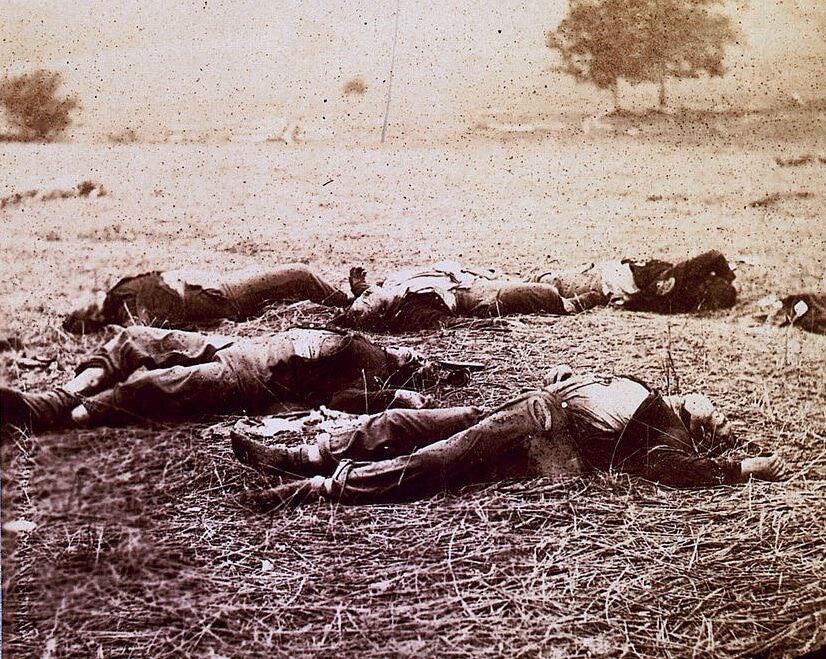
Secession and Civil War
Upon the election of Abraham Lincoln, the Southern states attempted to secede from the Union for fear that Lincoln would abolish slavery. Believing secession to be illegal, Lincoln chose to go to war against these states to preserve the Union.
Issue
Indirectly, the American Civil War resulted from a threat to the sustainability of slavery in the South. Fueled by the Dred Scott decision and claims that slavery had finally been made the law of the land, the North-South, slavery-abolition divide had become more sharply defined. Anti-Northern sentiment in the South reached a boiling point when Abraham Lincoln won the 1860 election. The Southern states, believing that Lincoln planned to abolish slavery at the federal level, issued declarations of secession framed around protecting the institution of slavery and formed the Confederate States of America. Lincoln believed it was his presidential duty to preserve the Union, and a war against the Confederate states was his only option to hold the nation together.
The Constitution is unclear on whether secession is legal. The president of the Confederacy, Jefferson Davis, claimed that states had the right to secede from the Union because the Union itself was formed after seceding from Britain in 1776. He also argued that states have the right to leave a union they voluntarily joined.
Lincoln disagreed with this argument. He believed that the Constitution bound the states together as one Union, thus making secession illegal. Lincoln was even more worried about the fate of democracy. In his view, the secession of the Southern states from the Union, if allowed, would mean that the American experiment of self-government was no longer viable.
While Lincoln waged war against the Confederacy primarily to preserve the Union, he understood the need to address the underlying tensions that had led to secession. In 1863, he delivered a speech known as the Emancipation Proclamation, in which he declared that all slaves in the rebelling Southern states were free. The speech gave the Union a needed boost in morale to continue fighting the brutal war. It also inspired thousands of slaves in the South to flee and fight for the Union army.
When the war ended two years later, the nation had to confront two conflicting problems: how to re-integrate the Southern states; and how to establish a legal foundation for including freed slaves as co-equal partners in the government of the people, for the people, and by the people.
Causes
From the earliest days of the Union up to the Civil War, the issue of slavery and its abolition had surfaced time and time again without being fully resolved. Instead, due to its volatility, leaders from the North and the South sought compromise to avoid any fractures to the Union.
While drafting the Constitution, the Founding Fathers were deliberately vague about the legality of slavery. In fact, the word “slave” or “slavery” was not even used in the document. The Founders referred to slaves as “other persons” while explaining the Three-Fifths Compromise. Similarly, in the Fugitive Slave Clause, the Founders used the phrase “person held to service or labor in one State” to describe a slave. Although many of the Constitution’s signers were morally against slavery and wanted to abolish it, they understood that such a contentious issue could sway Southern states to vote against the ratification of the Constitution altogether.
The Constitution’s failure to resolve the question of slavery meant that the North-South divide over the issue persisted and continued to affect policymaking. The Missouri Compromise of 1820 and the Compromise of 1850 were two such policies that temporarily resolved the issue of expanding slavery, but further exacerbated sectionalism and ultimately served as catalysts for the Civil War.
Outcome
The American Civil War was the first and only time in the nation’s history to date that the union of states was threatened. The aftermath of the war set important legal precedents regarding citizenship and equality but accomplished little to douse the animosity that simmered in the South for the North and former slaves.
After the Civil War ended, the country entered the Reconstruction era, which lasted until the inauguration of President Rutherford B. Hayes in 1877. During this period, the Confederate states were re-integrated into the Union. In 1869, the Supreme Court determined in the case Texas v. White that secession is unconstitutional because all states are part of an “indestructible union.” Thus, from a legal perspective, during the Civil War the Southern states were merely rebelling states and had never seceded from the Union. Although many Republicans opposed this decision because they wanted to punish the Southern states for their treachery, the ruling asserted the primacy of the binding pact between states and the federal government.
The creation of amendments to protect newly freed Black people also defined the Reconstruction era. From 1865 to 1870, Congress ratified the 13th, 14th, and 15th Amendments. The 13th Amendment abolished slavery in the United States. The 14th Amendment gave citizenship to people born in the United States, including former slaves, and the 15th Amendment prohibited the disenfranchisement of voters based on their race. Although racial discrimination and inequality persisted long after the Civil War, these amendments established a strong Constitutional foundation for building “a more perfect union” for all its citizens.
Feature image: Federal dead on the field of battle of first day, Gettysburg, Pennsylvania (Source: Library of Congress)

